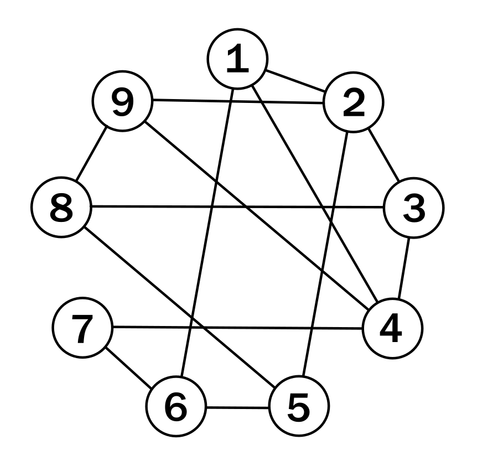Today's random thing: got myself thinking about this graph of pairs of digits 1-9 that produce prime sums. Much sparser than the complementary graph of pairs that sum to composite numbers, which I sort of knew would be true but hadn't ever examined up close.
I enjoy the resulting asymmetrical sigil, and how each distinct prime that can be summed to ends up having its own consistent slope among the diagonal connections: all 11s, all 13s, all 7s, all 5s.



 he/him
he/him